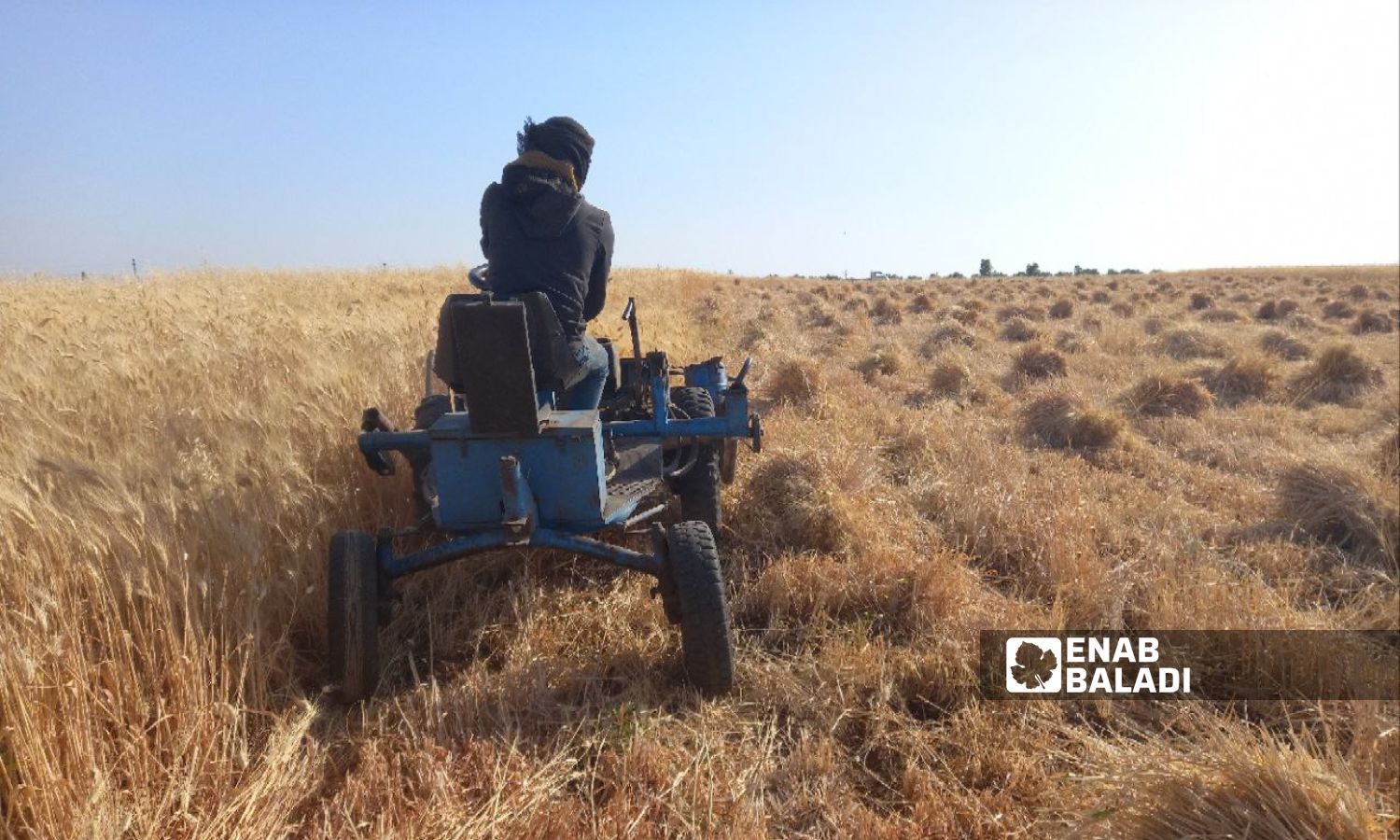



Farmers along the Syrian-Jordanian border in Daraa governorate resorted to harvesting their wheat and barley crops early, starting from mid-May this year, fearing their crops might catch fire. This results from the Jordanian border guards’ practice of burning vegetation in border areas to combat smuggling activities between the two countries.
Abdul Rahman, a 55-year-old farmer from the border town of Tel Shehab, told Enab Baladi that he has 20 dunams planted with wheat and 15 dunams planted with barley. He had to harvest them early this year, noting that he usually begins harvesting at the start of June every year.
He added that the burning of about 800 dunams of wheat fields on the Syrian-Jordanian border near Daraa city prompted him to hasten the harvest. His fears escalated when fires broke out near the town of Khirbet Ghazaleh after Jordan burned vegetation in the border buffer zone between the two countries.
According to Abdul Rahman, the farmers’ fears of continued burning by Jordan dictated the start of this year’s harvest, posing a threat to their non-irrigated (rainfed) wheat and barley crops.
As an emergency measure, farmers plowed a 20-meter-wide strip along the border from Tel Shehab to Khirbet Ghazaleh, spanning more than three kilometers, to create a buffer zone to prevent the spread of fires from the border towards their crops.
The local Facebook page “Tel Shehab Deirat Hali” published an appeal to farmers, urging them to monitor their crops as Jordan continues to burn vegetation along the border buffer zone.
Jordan fears that smugglers might exploit dense vegetation in border areas to infiltrate into its territory, prompting the border guards to remove plants by burning them. This can cause fires to spread and scorch agricultural areas, according to residents of the area who spoke to Enab Baladi.
The Jordanian border guards clash almost daily on their northern border with smugglers coming from Syria, who are active in smuggling drugs and weapons into Jordan.
Mohammad Abdul Karim, another farmer with fields in Tel Shehab, western Daraa, is still waiting for his turn for the combine harvester to arrive at his land, as he told Enab Baladi.
He added that gunfire from the Jordanian border guards during border patrols looking for smugglers threatens to ignite his crops, prompting him to seek an early harvest method to avoid potential fire damage.
Abdul Karim has about 90 dunams planted with wheat, and if it burns, he would face an untenable financial loss. He has been waiting for his turn in the harvest queue for the combine harvester working in the area.
Wheat and barley farmers in the region are competing for reservations with the combine harvesters that are active in harvesting crops in the border area.
Fires have not been limited to border areas only. Various parts of Daraa have witnessed fires that destroyed hundreds of dunams of wheat, pushing some to harvest their crops early, while others took precautions by plowing parts of their land or starting to guard their crops.
Hussain Jaber, a farmer from western rural Daraa, told Enab Baladi that he had to harvest and plow around his land and irrigate it with water, fearing that passersby might accidentally set it on fire with cigarette butts.
He added that he resorted to hand-harvesting before the wheat matured, sacrificing an area equivalent to one dunam (1,000 meters), fearing that his entire 25-dunam crop might burn.
This year’s fire frequency prompted the Daraa Agriculture Directorate of the Syrian regime government to open centers for early wheat delivery, according to a post by the directorate on its official Facebook page on April 14.
Ahmad al-Masri, a member of the executive office in Daraa governorate, said that farmers in Daraa could deliver their wheat crop to the Izraa and al-Sanamayn centers starting from May 21. He justified the early opening for receiving wheat from farmers to protect the crop from fires, according to the directorate.
According to Bassam al-Hashish, Director of Daraa Agriculture, the irrigated wheat planted area in Daraa governorate exceeded 11,000 hectares, and the rainfed wheat planted area reached about 87,000 hectares, while the area planted with barley reached about 40,000 hectares.
if you think the article contain wrong information or you have additional details Send Correction